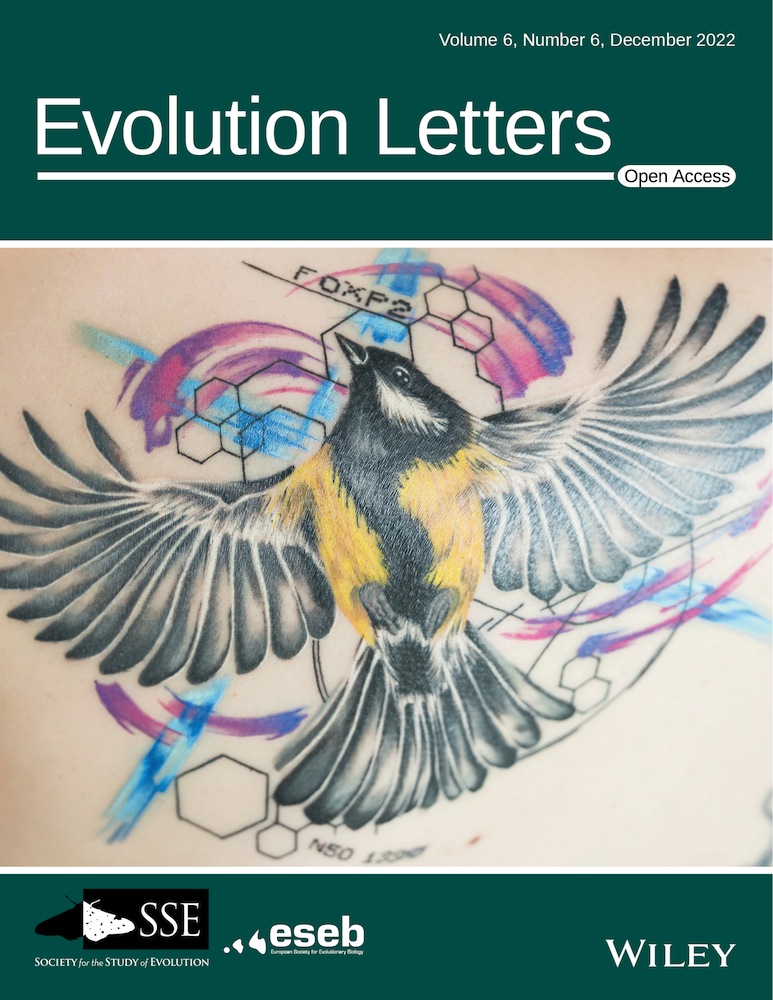Adaptive colonization across a parasitism–mutualism gradient
IF 3.7
1区 生物学
Q2 EVOLUTIONARY BIOLOGY
引用次数: 0
Abstract
Adaptive colonization is a process wherein a colonizing population exhibits an adaptive change in response to a novel environment, which may be critical to its establishment. To date, theoretical models of adaptive colonization have been based on single-species introductions. However, given their pervasiveness, symbionts will frequently be co-introduced with their hosts to novel areas. We present an individual-based model to investigate adaptive colonization by hosts and their symbionts across a parasite–mutualist continuum. The host must adapt in order to establish itself in the novel habitat, and the symbiont must adapt to track evolutionary change in the host. First, we classify the qualitative shifts in the outcome that can potentially be driven by non-neutral effects of the symbiont–host interaction into three main types: parasite-driven co-extinction, parasite release, and mutualistic facilitation. Second, we provide a detailed description of a specific example for each type of shift. Third, we disentangle how the interplay between symbiont transmissibility, host migration, and selection strength determines: (a) which type of shift is more likely to occur and (b) the size of the interaction effects necessary to produce it. Overall, we demonstrate the crucial role of host and symbiont dispersal scales in shaping the impacts of parasitism and mutualism on adaptive colonization.跨越寄生-互生梯度的适应性定殖
适应性定殖是一个过程,在这个过程中,定殖种群表现出适应性变化,以应对新环境,这可能对其建立至关重要。迄今为止,适应性定殖的理论模型都是基于单一物种的引入。然而,鉴于共生体的普遍性,它们经常会与宿主一起被引入到新的地区。我们提出了一个基于个体的模型来研究宿主及其共生体在寄生虫-互生体连续体中的适应性定殖。宿主必须适应新的栖息地,而共生体必须适应宿主的进化变化。首先,我们将共生-宿主相互作用的非中性效应可能导致的结果质变分为三大类型:寄生虫驱动的共同灭绝、寄生虫释放和互利促进。其次,我们为每种类型的转变提供了一个具体实例的详细描述。第三,我们揭示了共生体传播性、宿主迁移和选择强度之间的相互作用如何决定:(a)哪种类型的转变更有可能发生,以及(b)产生转变所需的相互作用效应的大小。总之,我们证明了宿主和共生体的扩散规模在寄生和互生对适应性定殖的影响中的关键作用。
本文章由计算机程序翻译,如有差异,请以英文原文为准。
求助全文
约1分钟内获得全文
求助全文
来源期刊

Evolution Letters
EVOLUTIONARY BIOLOGY-
CiteScore
13.00
自引率
2.00%
发文量
35
审稿时长
10 weeks
期刊介绍:
Evolution Letters publishes cutting-edge new research in all areas of Evolutionary Biology.
Available exclusively online, and entirely open access, Evolution Letters consists of Letters - original pieces of research which form the bulk of papers - and Comments and Opinion - a forum for highlighting timely new research ideas for the evolutionary community.
 求助内容:
求助内容: 应助结果提醒方式:
应助结果提醒方式:


